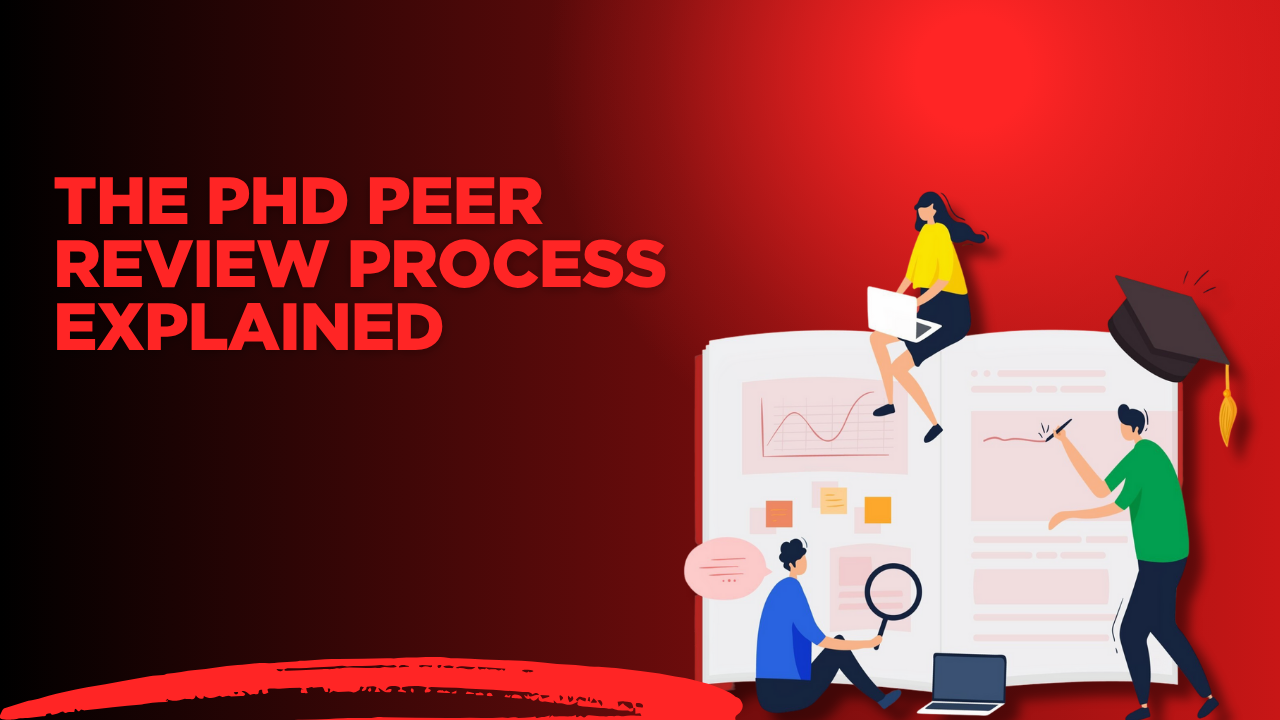The PhD Peer Review Process Explained
Kenfra Research - Shallo2025-06-13T14:57:23+05:30The journey of a PhD scholar is filled with milestones—completing coursework, defending your thesis proposal, conducting original research, and publishing your findings. One of the most critical aspects of academic publishing is the PhD Peer Review Process, a quality control mechanism that ensures your research meets the standards of the academic community. But what exactly is the PhD Peer Review Process, and why does it matter so much?
In this comprehensive guide, we’ll break down everything you need to know about the peer review process—how it works, why it matters, the types of peer review, how to respond to reviewer feedback, and tips to navigate the process with confidence.

What is the Peer Review Process in PhD Research?
The PhD peer review process is the evaluation of your research paper, thesis, or dissertation by independent experts in your field before it gets published in an academic journal or accepted by a university. These reviewers assess the originality, validity, significance, and clarity of your work, helping to maintain the integrity and quality of academic literature.
For PhD scholars, peer review plays a crucial role in:
- Ensuring the accuracy and reliability of research.
- Enhancing the credibility of scholarly work.
- Receiving constructive criticism for improvement.
- Achieving recognition and acceptance in the academic community.
Why is the Peer Review Process Important in PhD Research?
Here’s why the PhD peer review process is a cornerstone of scholarly publishing:
- Academic Validation
A positive peer review serves as validation from the academic community. It confirms that your research methods are sound, your data is reliable, and your conclusions are logical.
- Improvement Through Feedback
Even the most seasoned researchers benefit from peer feedback. Reviewers may spot overlooked flaws, offer suggestions, or raise questions that can lead to a stronger final version of your paper.
- Reputation and Career Growth
Publishing peer-reviewed articles significantly boosts your academic profile. It can improve your chances of securing grants, fellowships, or postdoctoral opportunities.
- Maintaining Scientific Integrity
Peer review acts as a filter to eliminate poor-quality, plagiarized, or unethical research, ensuring the credibility of scholarly work.
How Does the PhD Peer Review Process Work?
While the exact process can vary between journals and institutions, the general steps of the PhD peer review process are as follows:
Step 1: Manuscript Submission
You submit your research paper or article to a reputable peer-reviewed journal. Ensure your manuscript meets the journal’s formatting and ethical guidelines.
Step 2: Editorial Screening
The editor checks if your manuscript fits the journal’s scope and meets basic standards. If it passes, the paper is sent out for peer review; otherwise, it may be desk-rejected.
Step 3: Reviewer Assignment
Experts in your research area (usually 2–3) are selected as reviewers. These individuals remain anonymous in most cases.
Step 4: Review Process
Reviewers critically analyze your paper based on:
- Research originality and relevance.
- Methodological rigor.
- Validity of findings.
- Use of references.
- Structure and clarity.
They submit their reports along with one of the following recommendations:
- Accept
- Minor revisions
- Major revisions
- Reject
Step 5: Editorial Decision
Based on reviewer feedback, the editor makes a decision. If revisions are requested, you’ll need to address the reviewers’ comments and resubmit.
Step 6: Revisions and Resubmission
You revise the manuscript and include a point-by-point response to each reviewer comment. This is your chance to clarify misunderstandings, defend your work, and show that you’ve taken feedback seriously.
Step 7: Final Decision and Publication
If your revised submission satisfies the reviewers and editor, the paper is accepted and moved to production for publication.
Types of Peer Review in PhD Research
There are different formats of peer review, each with its own advantages:
- Single-Blind Review
- Reviewers know the identity of the author.
- Authors don’t know the identity of reviewers.
- Most common type, but can be biased.
- Double-Blind Review
- Neither the authors nor the reviewers know each other’s identities.
- Promotes objectivity and fairness.
- Open Peer Review
- Both the reviewers and authors are known to each other.
- Promotes transparency and accountability.
Tips to Navigate the PhD Peer Review Process
- Choose the Right Journal
Submit your work to journals that align with your research scope and academic goals. Check the journal’s impact factor, peer review process, and acceptance rate.
- Polish Your Manuscript
Before submitting, proofread for grammar, structure, and formatting. Use plagiarism detection tools to ensure originality.
- Be Ready for Criticism
Don’t take reviewer comments personally. Treat them as opportunities to refine and improve your work.
- Respond Respectfully
When replying to reviewer feedback, always be professional, clear, and thorough. Agree where appropriate and respectfully explain where you disagree.
- Keep Track of Revisions
Maintain a revision log and highlight changes in your resubmitted manuscript. This helps reviewers easily locate updates.
- Be Patient
Peer review can take weeks or months. Use this time to work on other projects, write future papers, or prepare for presentations.
Common Reviewer Comments and How to Address Them
PhD scholars often encounter the following types of feedback:
– “The methodology lacks detail.”
Response: Expand your methodology section with step-by-step procedures, tools used, and justifications.
– “Literature review is outdated.”
Response: Update your literature review with the most recent and relevant studies.
– “Clarity issues in results discussion.”
Response: Use clearer language, visuals (graphs, tables), and explain the implications of your findings.
– “Unsupported conclusions.”
Response: Provide stronger evidence and ensure your conclusions are directly tied to your data.
Challenges in the PhD Peer Review Process
While the system is designed to improve research quality, scholars may face several challenges:
- Bias or unfair criticism from reviewers.
- Lengthy delays in getting feedback.
- Conflicting reviews that are hard to reconcile.
- Lack of transparency in editorial decisions.
Despite these challenges, the peer review process remains the gold standard for academic validation.
Final Thoughts: Embrace the Process
Understanding the PhD Peer Review Process is essential for every doctoral scholar who aims to publish impactful research. While the PhD Peer Review Process can be rigorous and even frustrating at times, it is a critical step toward academic credibility, knowledge dissemination, and scholarly growth.
Remember: Peer review is not a judgment—it’s a conversation between you and the academic community. With the right mindset and preparation, you can navigate the process confidently and emerge as a better researcher.
Kenfra Research understands the challenges faced by PhD scholars and offers tailored solutions to support your academic goals. From topic selection to advanced plagiarism checking.











Leave a Reply